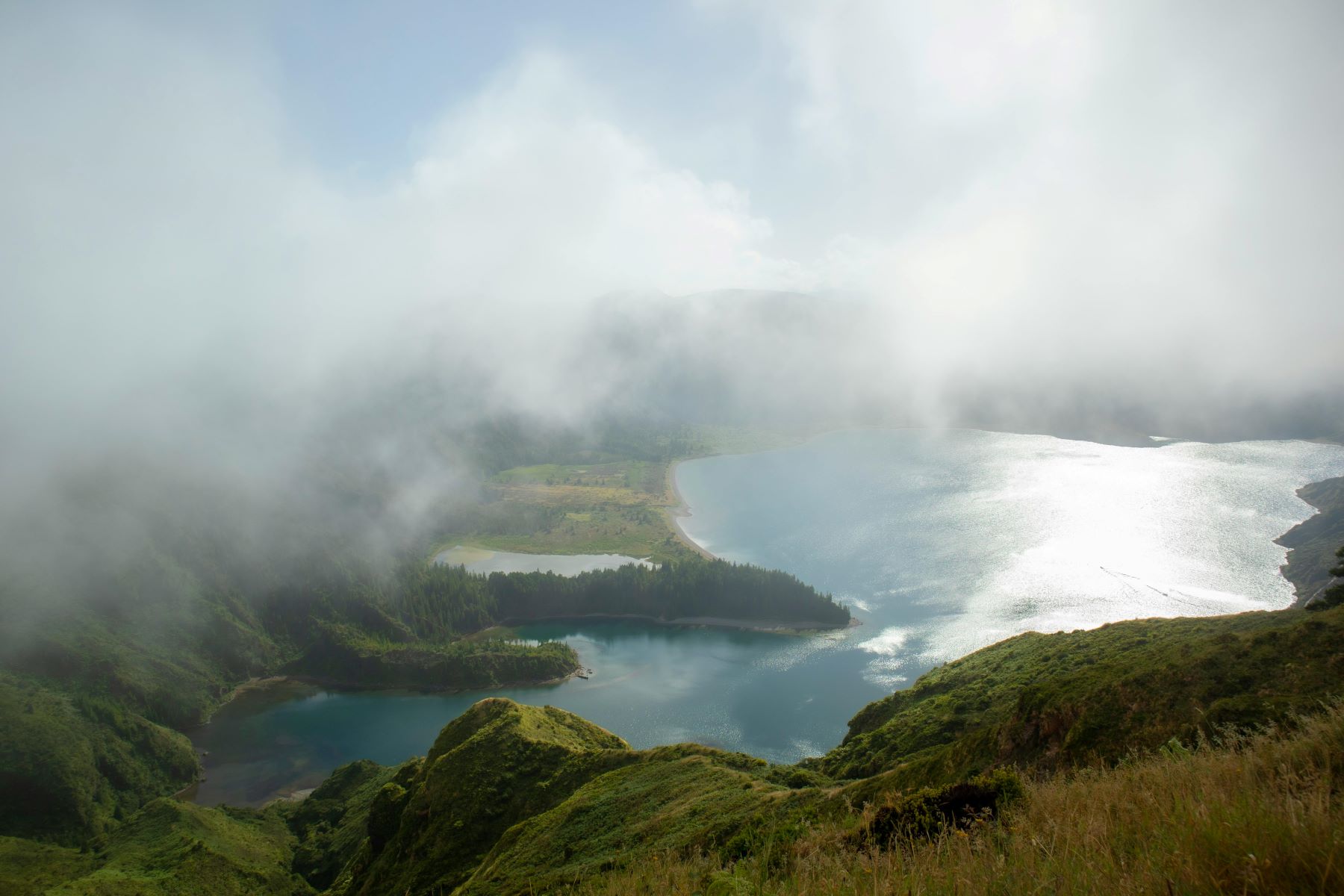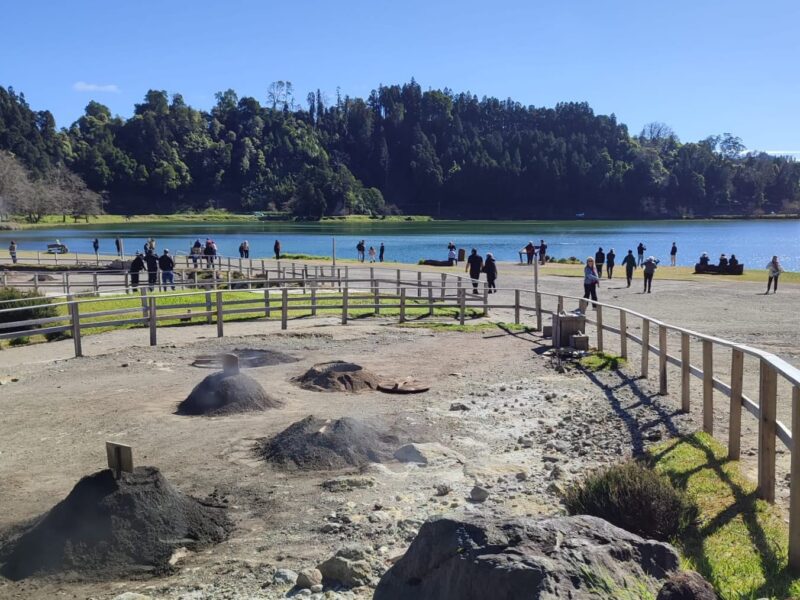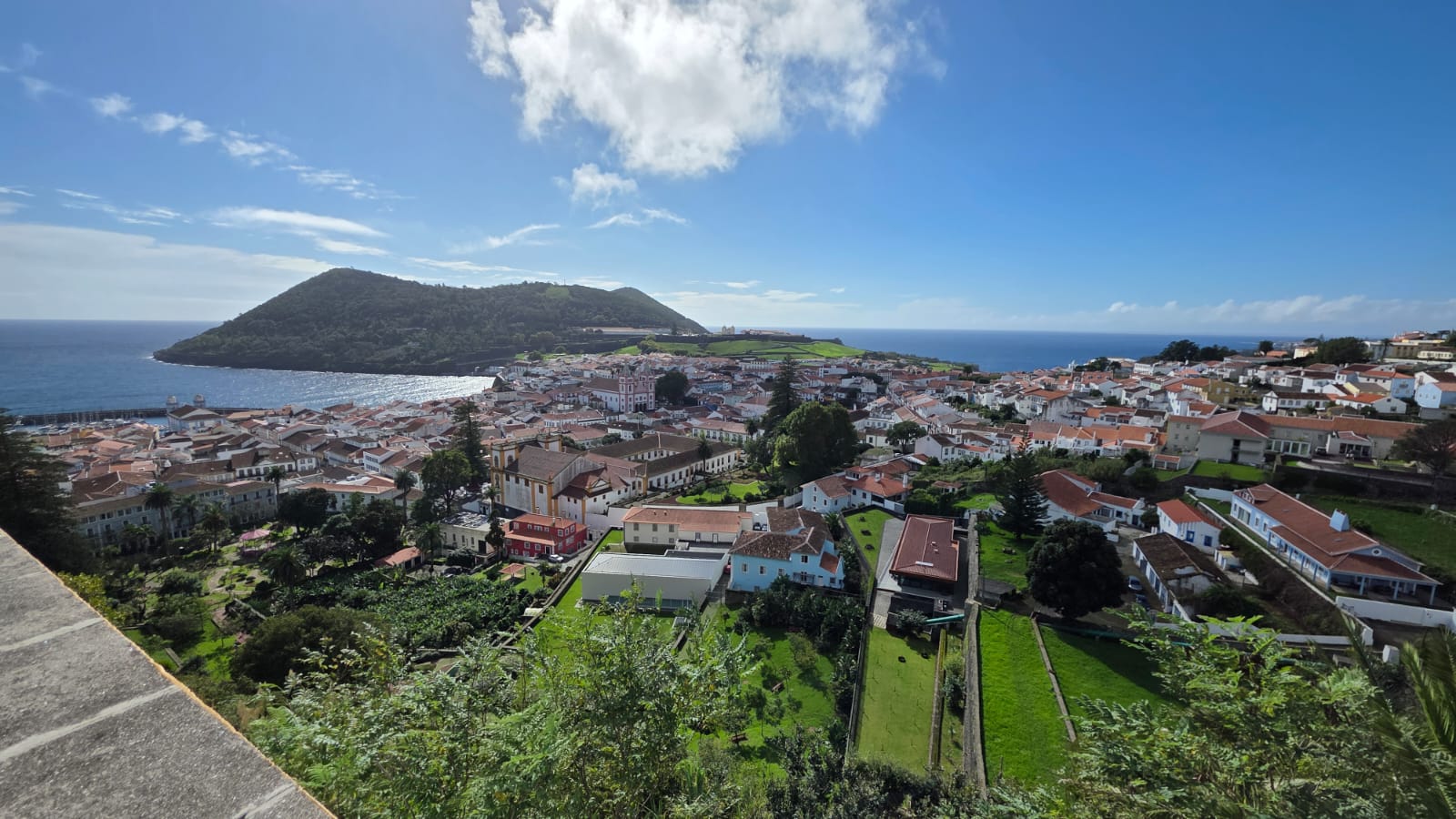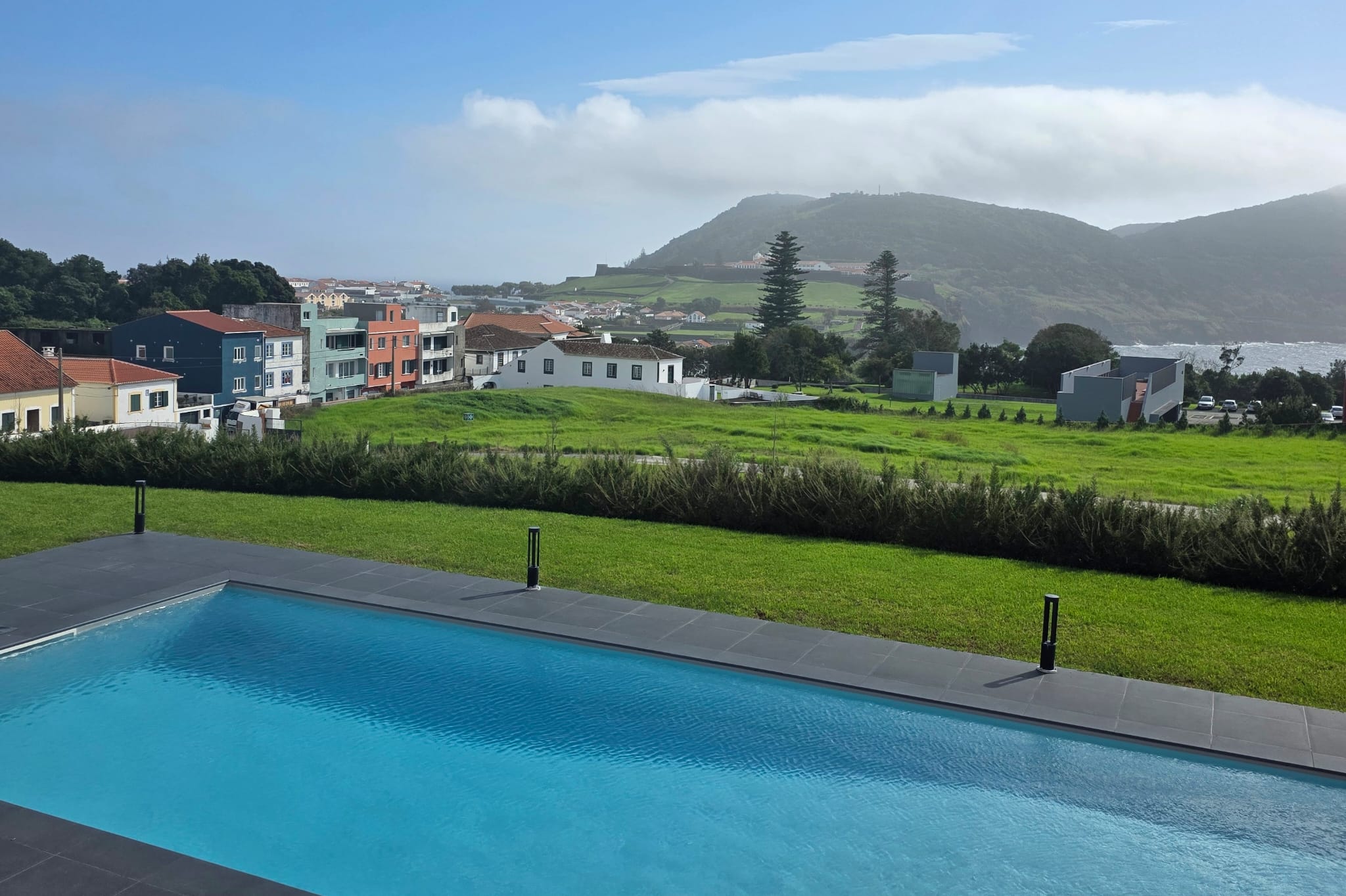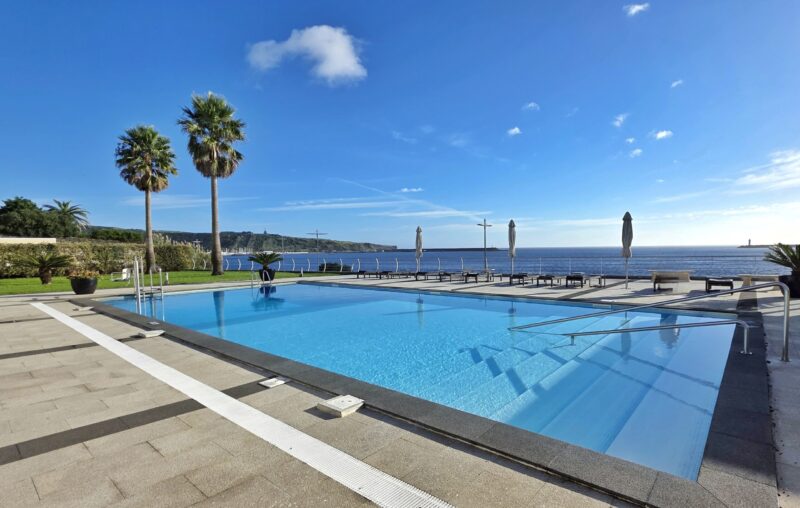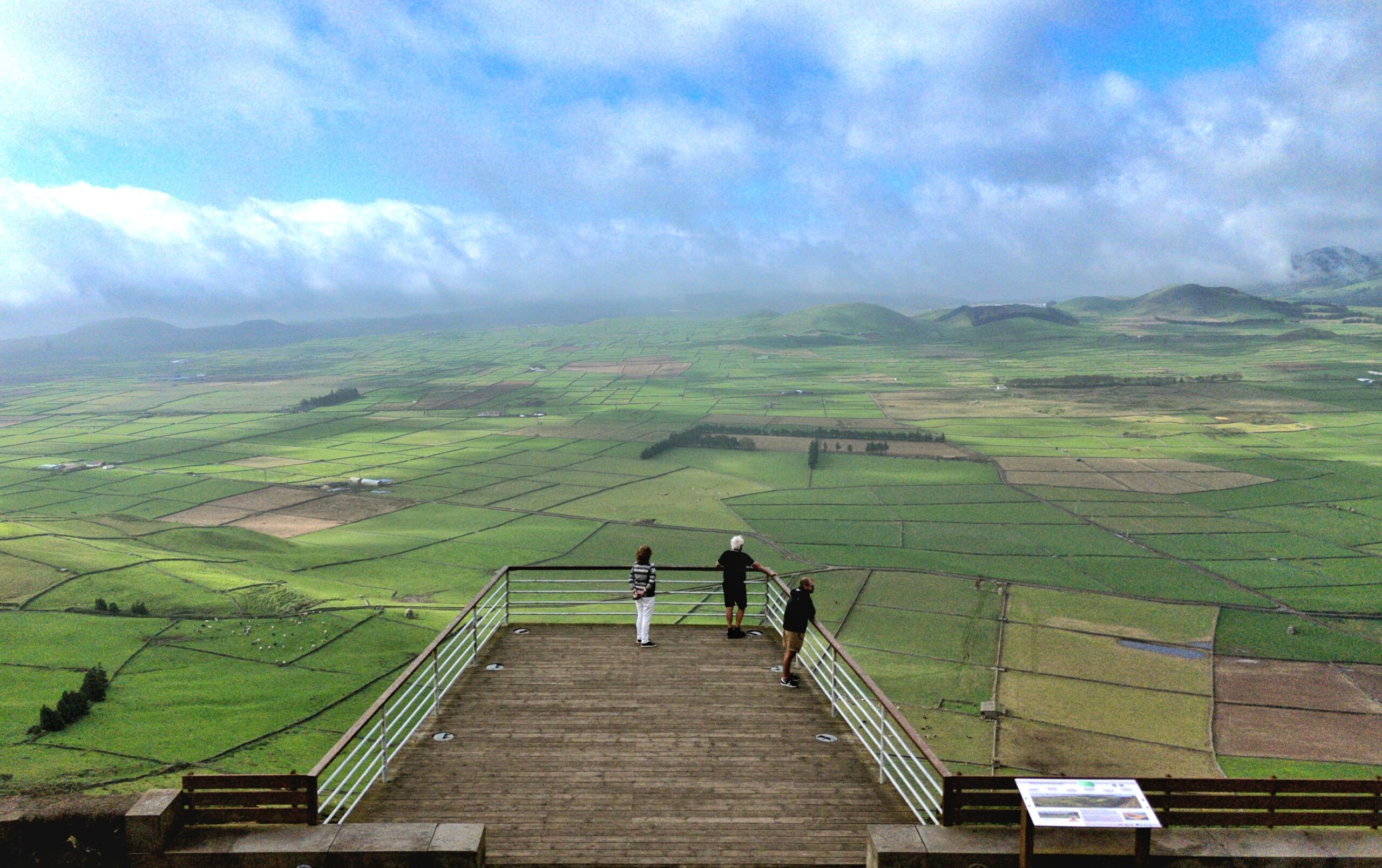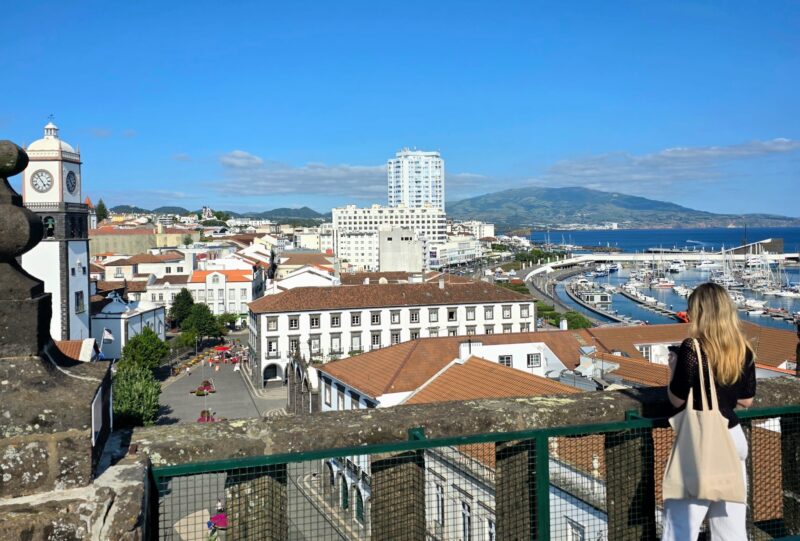The Azores, a stunning Portuguese archipelago in the heart of the Atlantic Ocean, are famous for their lush green landscapes, volcanic craters, dramatic coastlines, and… a rather unique climate.
If you’re planning a trip to the Azores or simply curious about the islands, understanding the weather throughout the year can help you pick the perfect time to visit—or at least know what to pack!
Check out our complete Azores packing guide for tips on what to bring.
A Mild Atlantic Climate
The Azores have a temperate maritime climate, with mild temperatures year-round. Extreme heat and cold are rare, but the weather is famously unpredictable — it’s common to experience sun, rain, wind, and fog all in the same day.
Since the weather can change quickly, having a rental car gives you the freedom to explore the islands at your own pace and avoid being stuck in bad weather. Book your rental car today — prices start from €35 per day with full insurance included.
Key Climate Features:
- Low temperature range: Differences between winter and summer temperatures are small.
- High humidity: Humidity is high, and rainfall is significant, which contributes to the islands’ lush green landscapes.
- Persistent winds: Winds are a notable feature of the Azorean climate.
- No dry summer months: Unlike Mediterranean climates, the Azores do not have a dry summer period.
Does it really rain a lot?
Not as much as people think — but yes, it does rain. Rain is frequent but usually light and scattered rather than heavy downpours. That’s exactly why the islands are so beautifully green. Humidity stays around 80 percent almost year-round.
The Rainiest Months in the Azores
February and March are typically the rainiest months, with an average of 15 rainy days per month. Some days bring light, steady rain, while others have short, heavier showers.
When is the Best Time to Visit São Miguel?
It depends on your goals. Two of the island’s main highlights — Sete Cidades Lake and Lagoa do Fogo — can be covered by fog in the winter, making views less reliable.
Here’s a breakdown of what to expect in each season, but keep in mind that nature is unpredictable. For example, June in 2025 had more rain than the previous three years.
The Azores are not a traditional sun-and-beach destination. Travelers come here for the lush scenery, hiking trails, and peaceful, safe environment.
What Can You Expect in Each Season in The Azores
Winter (December to February)
A calm and cozy atmosphere, ideal for those seeking relaxation. This season tends to be rainy, but you may still be surprised by beautiful sunny days.
It’s also the rainiest time of year, and the wind can make it feel cooler. If you don’t mind some rain and want to enjoy a quieter, more affordable trip, this season is perfect.
Recommended activities: Food tours, cooking classes, guided walking city tours, Jeep Tours.
Pro Tip: Read our guide on What To Do in São Miguel on Rainy Days.
Spring (March to May)
Pleasant temperatures and affordable prices make spring great for outdoor adventures. Days get longer, and the landscape starts to show early blooms, with vibrant green fields and the first signs of hydrangeas. Rain is still present but lighter than in winter.
Recommended activities: Whale Watching, buggy tours, horseback riding, guided Hiking tours, kayaking on Sete Cidades Lake.
Summer (June to September)
The most popular season, with plenty of sunshine and perfect conditions for water sports and outdoor activities. Temperatures average 22°C–27°C, with the warmest water between July and August. Quick showers are still possible, but they usually pass fast.
Recommended activities: Paragliding, snorkeling, jet ski tours, coasteering, kayaking on Vila Franca, fishing trips, sunset boat tours.
Pro Tip: In summer, airport car pick-ups can be stressful — long lines, paperwork, and inspections can take up to two hours after a flight.
With our service, someone will meet you at the airport and hand over your car directly. No lines, no stress, full insurance and no deposit required. Book early to secure the best rates:
Autumn (October and November)
Still warm enough for outdoor adventures but with fewer tourists and better deals.
In autumn, the weather gradually starts to cool down, and rainfall becomes more frequent. Even so, October often brings pleasant days with mild temperatures. November already marks a transition to the wetter and more unstable winter climate.
Recommended activities: Buggy or Quad tours, guided hiking trails, canyoning, e-bike tours.
Important Tip: Be Ready for Anything
No matter the season, the best advice for visiting the Azores is to pack for all conditions. A light waterproof jacket, layered clothing, comfortable shoes, a small umbrella, and sunglasses are essential.
Azores Monthly Average Temperatures
Knowing what to expect from the weather can help you pack smarter and make the most of your visit. Here’s a quick overview of the average temperatures by month in the Azores:
January: 16°C
February: 14°C
March: 14°C
April: 15°C
May: 17°C
June: 20°C
July: 22°C
August: 24°C
September: 22°C
October: 20°C
November: 18,5°C
December: 16,5°C
Data from 2024 and 2025, by IMPA.
Create Your Own Travel Plan!
You don’t really need a travel agency to explore São Miguel — you can create your own itinerary, visiting only the places that truly interest you.
Our São Miguel Interactive Map makes it easy: organize points of interest by region or category — beaches, waterfalls, hiking trails, viewpoints, restaurants, and hidden gems. Instantly download it to your Google Maps for just €14.90. Includes photos, videos, and directions, updated regularly. Spend less time planning and more time exploring at your own pace!
Start building your personalized Azores adventure now!
Click here to get the Interactive MAP of São Miguel
More than 160 spots pinned on the island: 15 beaches, 10 waterfalls, 20+ viewpoints, 15 top trails, 12 natural pools, 25+ restaurants, picnic spots, sunset views, and hidden gems.
Got questions or tips about the Azores? JOIN OUR FACEBOOK GROUP
Want to see more of the Azores? SUBSCRIBE TO OUR YOUTUBE CHANNEL
The content of this post is the responsibility of its author.

